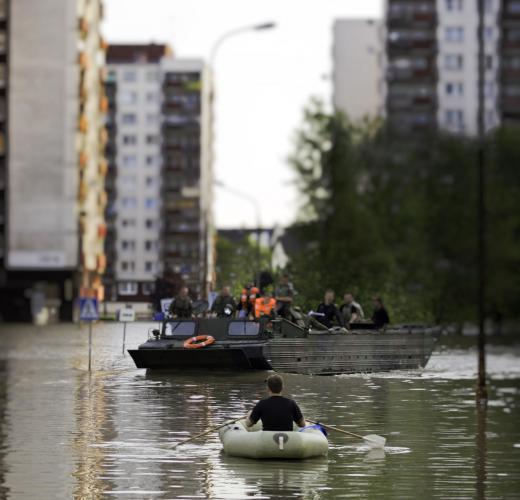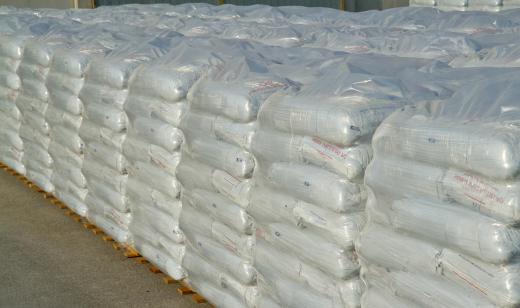What Is a Flood Wall?
A flood wall is an engineered structure designed to prevent the encroachment of water onto residential, commercial, or government property. Designs for flood protection walls can be relatively simple and short-term, such as vertical piles of sand bags, or they can be long-term permanent structures where steel beams and foundation piles are driven into the ground and strong concrete barriers are built atop them. In the UK, a flood wall is often referred to as a dike, and may also be a ditch dug below the normal level of ground to act as a barrier and method of channeling off water that is surging from a river, lake, or excessive rainfall runoff towards buildings.
An emergency flood retaining wall is often built by volunteers who fill sandbags and stack them in a vertical and horizontal line around buildings and other structures that rising water threatens. These types of flood walls offer the advantage that they are relatively easy to assemble and disassemble, and are made of readily available materials in many locations. Compact sand acts as an effective water barrier, as it is heavy enough to withstand wind and water pressure, and composed largely of quartz which does not absorb water like clay or dirt will. The drawback to a sandbag-built flood wall is that it requires a lot of work to construct and is not practical for cordoning off large areas long-term. A flood wall built of sand bags 300 feet (91.4 meters) long and 3 feet (0.91 meters) high has been estimated to require about 7,000 average size sand bags and 250 tons of sand to construct.

Flood wall design is unique depending on long-term conditions for an area or a current level of crisis. It has been estimated in the US that 75% of all flood water damage takes place from water flowing at a level less than 3 feet (0.91 meters) in height, so most makeshift flood wall structures are first built to this vertical level. Building flood walls in the UK to protect against periodic river flooding from heavy rainfall, known as flash flooding, is based on the principle that 12 hours of rain will raise water levels by a depth of up to 6 meters (20 feet), so preparations have to be significantly more extensive than with a smaller flood retaining wall.

The most extensive versions of flood wall design are those built to protect large metropolitan areas or important industrial facilities that sit close to major waterways such as nuclear power stations, and are at or near sea level. An example of this is the US city of New Orleans that has an extensive series of flood walls built around its perimeter, which are also maintained by the US Army Corps of Engineers. After the damage caused to the city and flood wall structure by hurricane Katrina in 2005, the Army Corps of Engineers began rebuilding the flood wall system to make it capable of withstanding a predicted once-in-a-century storm, with a completion date of 2011. Portions of the new flood wall are built of reinforced concrete that ranges from 15 to 19 feet in height (4.6 to 5.8 meters) with a 5-foot (1.5-meter) thick concrete base and reinforcing foundation piles that reach down into the ground 12 stories, or about 150 feet (46 meters). The wall is also embedded with tension connectors, expansion joints, and waterstop features to allow it flexibility in holding back the pressure of water surges driven inland from the Atlantic Ocean.
AS FEATURED ON:
AS FEATURED ON:
















Discuss this Article
Post your comments